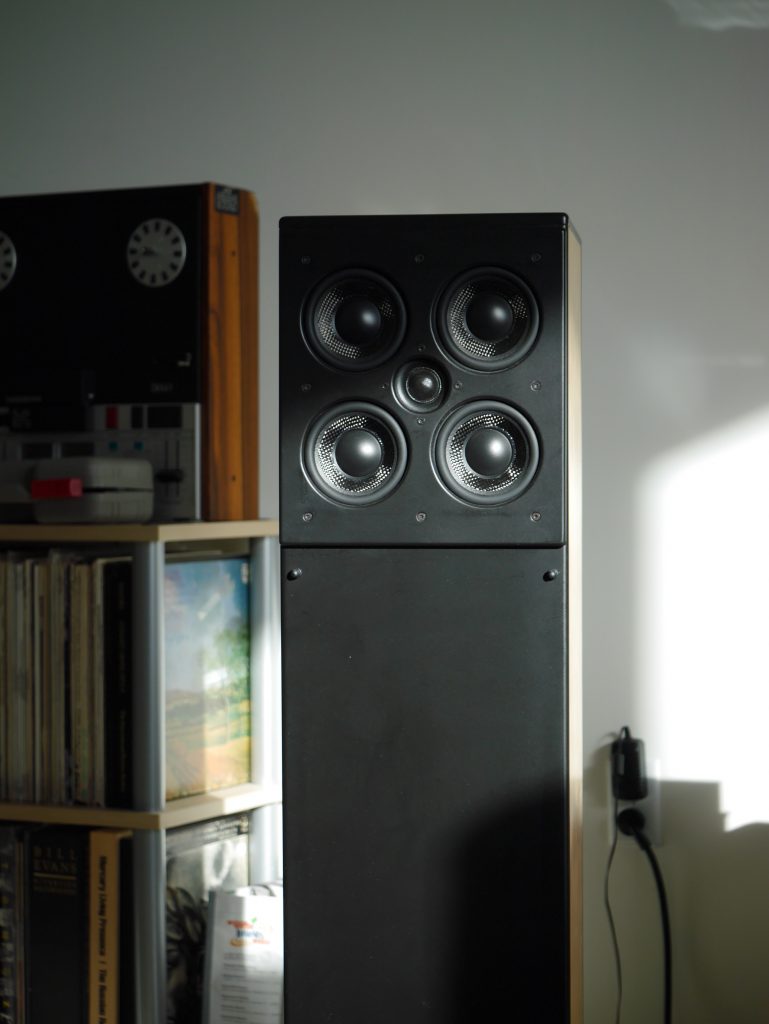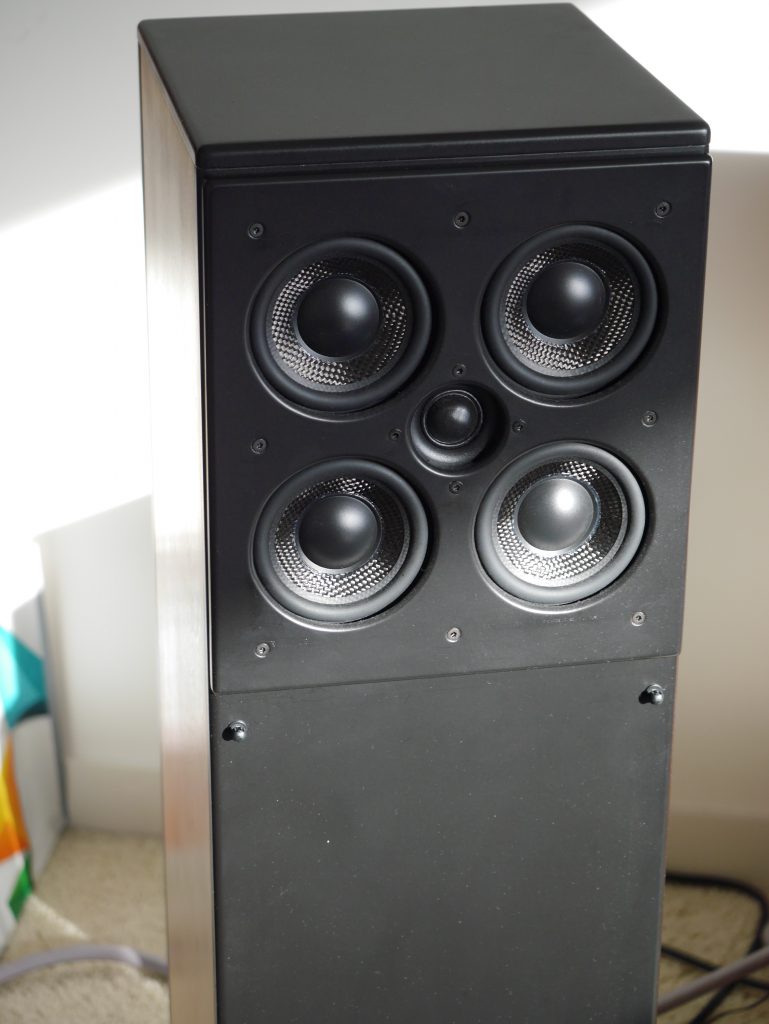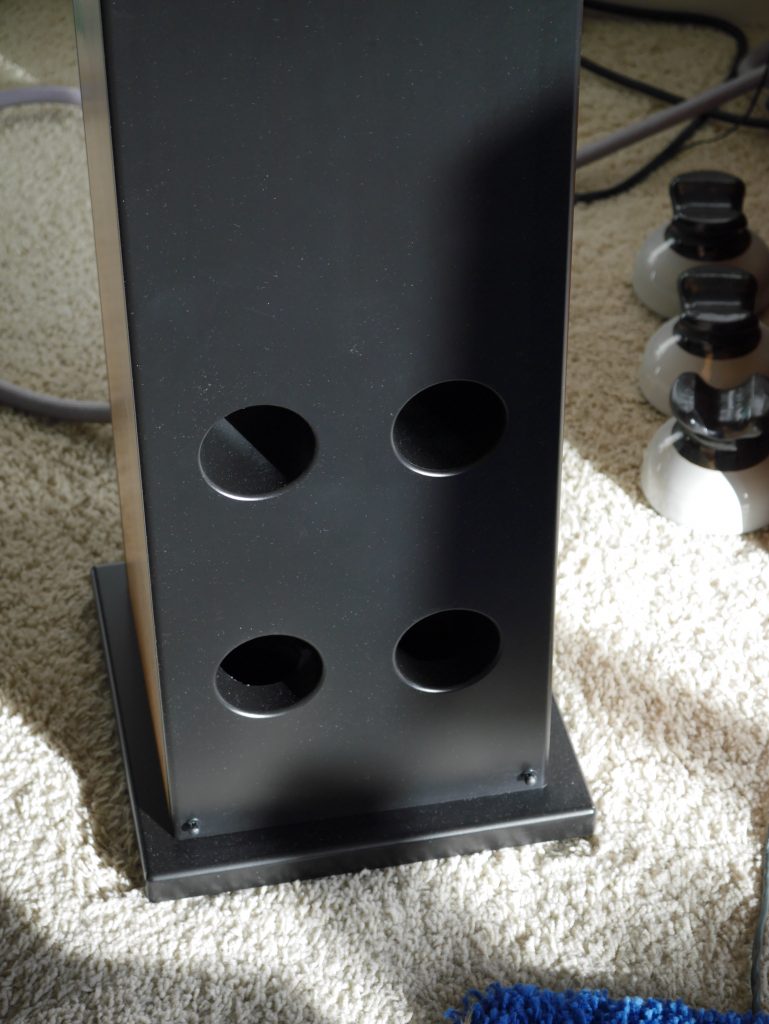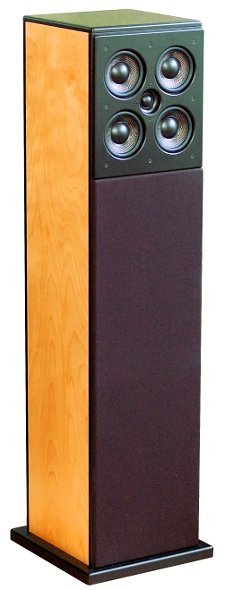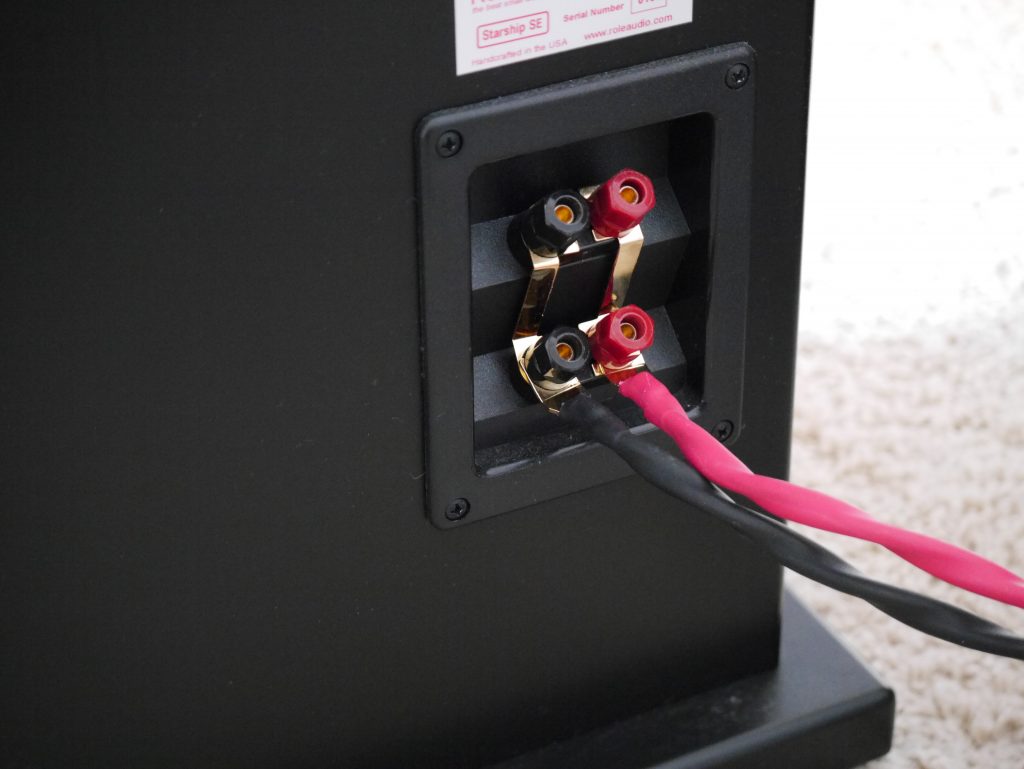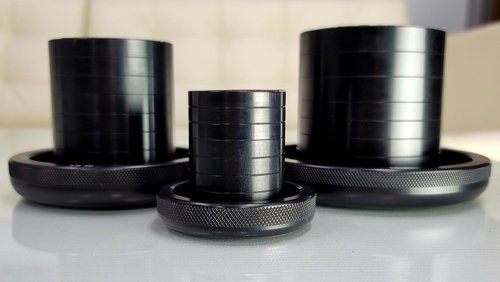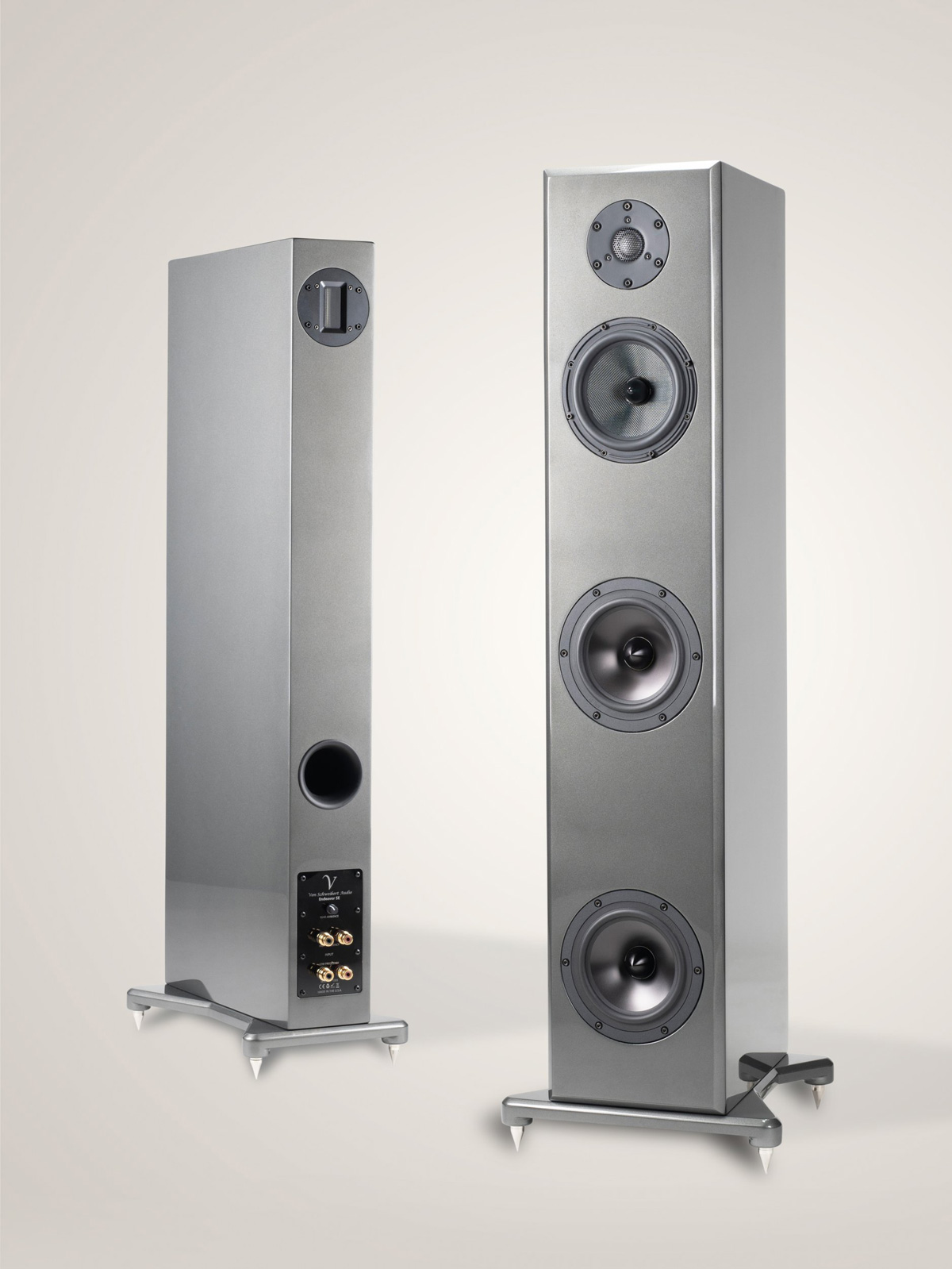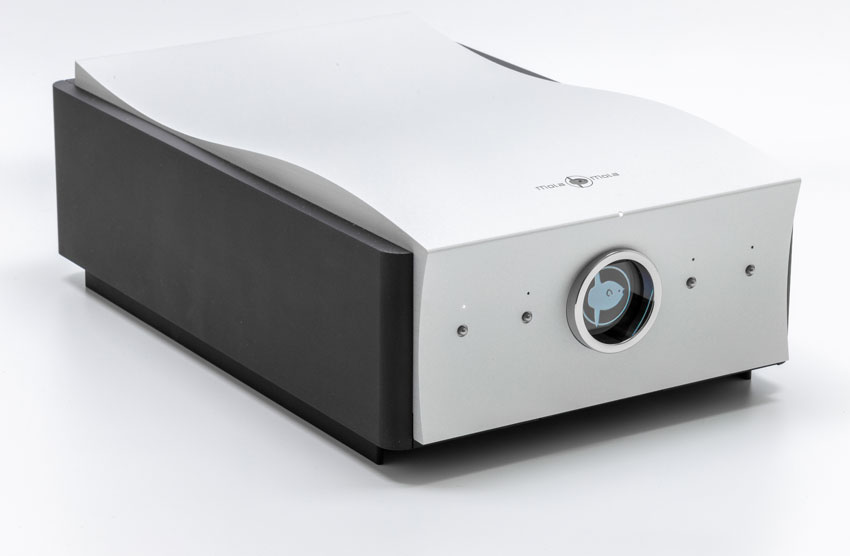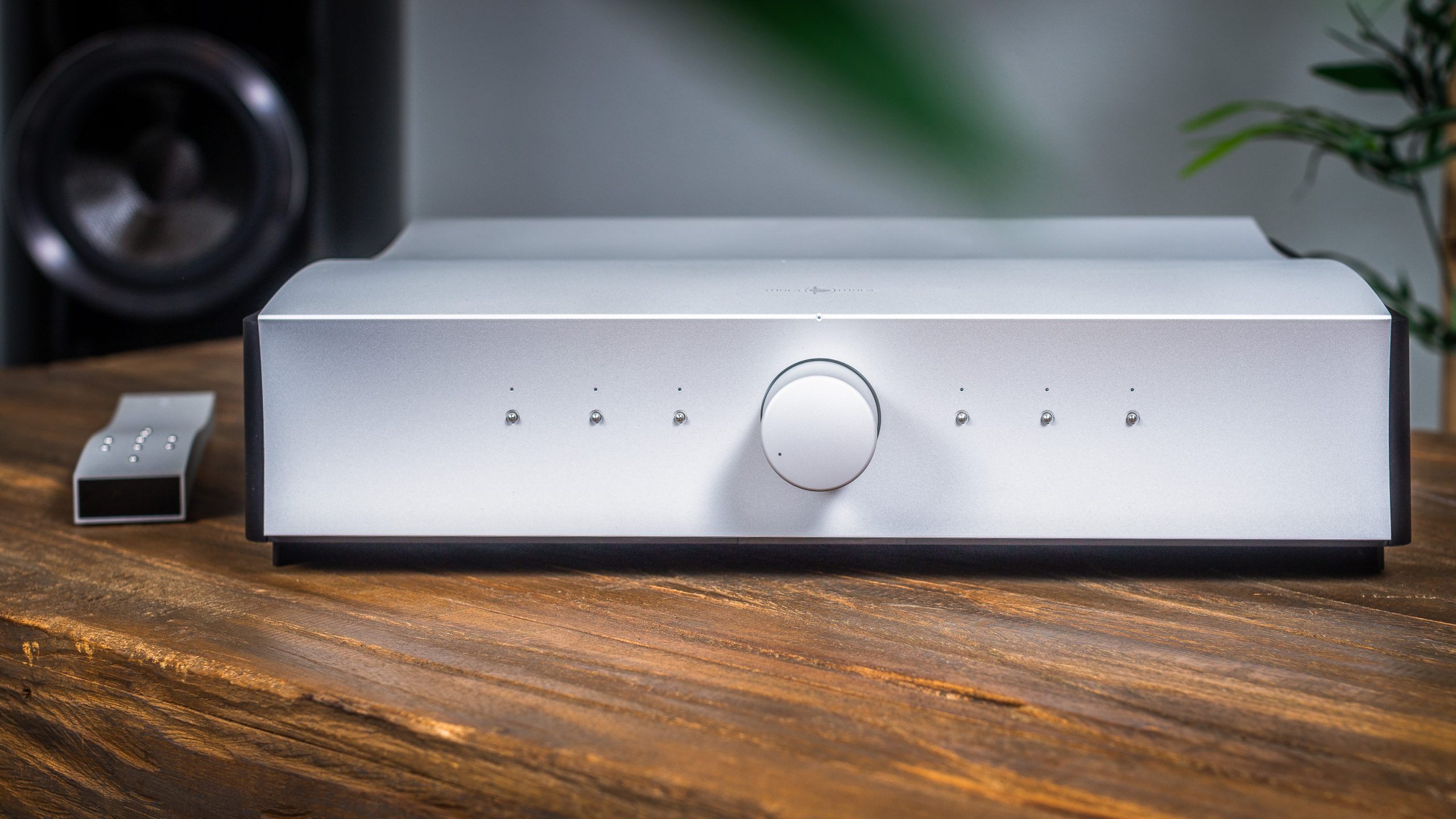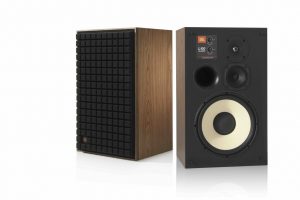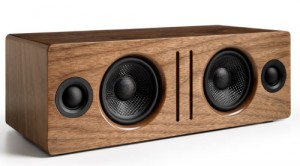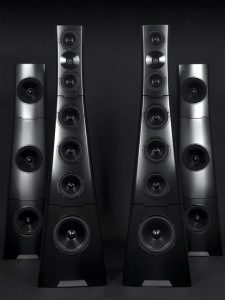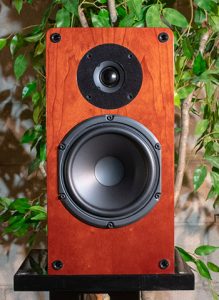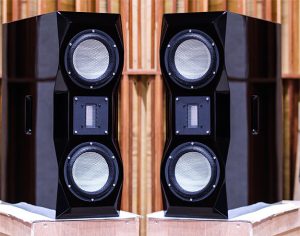Sometimes bigger, I mean longer, is better!
Straight out of the box, one can't help but notice that the Role Audio Starship SE speakers look a bit different than your typical compact two-way floor-standers. Oh, the cabinets appear traditional enough, albeit quite attractive and well-built; the speaker binding posts of high if not exceptional quality; and the overall fit-and-finish commensurate with the price: a fair but hardly cheap $8000 per pair.
What stands out at first blush is the unusual driver configuration—a high quality one inch soft-dome tweeter (manufactured by an Asian firm that Role Audio uses as a driver supplier) flanked by four 4" woven carbon fiber mid-woofers in a square mounting arrangement. The four tiny mid-woofers appear to be high quality transducers, but hardly suggestive of a speaker system whose low-frequency response dips into the mid-thirties. To reproduce the lower frequencies, the Starships rely on a tried-and-true but hardly commonplace technology: transmission line (TL) bass loading. Role adds its own twist here by employing what it describes as "an unprecedented four transmission [line] design (Quad TL - trademarked), an unprecedented four-woofer and a soft dome tweeter arranged as a two-way, time coherent, point source driver array."
While bass reflex speakers dominate the market, TL driver-loading has its champions. IMF Electronics, PCM Speakers, Fried and others have all used TL technology in most, if not all, of their speakers. PCM still does, as does Robert Lee with his superb line of Acoustic Zen speakers. In simplest terms, TL loading requires the use of a long duct-like structure, sometimes spiral or elliptical spiral in shape, into which the dynamic driver is fired. The air that radiates behind the bass (or in this case, mid-bass) drivers is forced through this internal duct or labyrinth to reinforce the bottom end of the frequency range.
The air in the TL effectively "loads" the bass driver or drivers, lowering its/their resonant frequency. This allows for the extended low end response one typically gets with TL designs, along with attendant improvements in bass driver damping. Their superior damping factors allow TL- loaded drivers to produce the same or greater low frequency output than sealed or ported systems, but with less driver excursion. In theory, this means that TL designs should be able to generate the same (or greater) low frequency output than sealed or ported enclosures, but with less distortion.
TL speakers also roll off more slowly than bass reflex models in the low frequencies. In this sense, TLs exhibit bass roll-off characteristics more typically encountered in sealed box speakers (12dB per octave versus the sharper 24dB per octave roll-off figures exhibited by bass reflex designs). TL supporters claim that this form of bass-loading results in superior driver control versus standard ported designs (superior damping), better transient and impulse response, and less total harmonic distortion. Relative ease of speaker placement in the listening room, and a better focused, better-delineated sound-stage are also cited as key advantages, not to mention the typically higher sensitivity ratings and ease-of-drive characteristics that many TLs boast.
Despite their many advantages, TL designs have one major disadvantage: Cost. The reason is simple: for a given bass cutoff frequency, the TL requires considerable space, mandating the use of a larger, more complex cabinet than that required of a bass reflex speaker. This, of course, means more money. Given these realities, one can plausibly argue that the speaker designer who eschews bass-reflex driver loading in favor of TL loading is by nature the less risk averse actor, at least given the current configuration of the high end. Today, almost every speaker maker that uses dynamic drivers employs bass reflex driver loading. And why not? At its most basic, designing a decent ported speaker is a pretty straightforward affair, a task made all-the-more predictable given the widespread use of the Thiele-Small alignment parameters, and more recently, cheap CAD tools.
TL speaker design, on the other hand, is a far less "evolved" science if you will. While its basic parameters are generally understood, no one has mapped out the various driver size vs. cabinet dimension variables with anywhere near the comprehensiveness and sophistication of the Thiele and Small design parameters. That Role Audio, a small player in high end terms, would embrace a technology that, based on science alone, requires the use of more complex, and of necessity, expensive cabinet designs (the road less traveled so to speak), says something about the firm's confidence in its own design abilities and in the promise of TL speakers overall.
Sonic Impressions
Which brings us back to the Role Audio Starship SE speaker and its novel use of four small mid-bass drivers mounted near the top of the speaker cabinet (versus one or more larger drivers). Because of their high placement, the four mid-bass units are less likely to induce floor bounce colorations. Their higher-than-usual location also makes room placement easier. Low frequency room anomalies just don't manifest to the degree they sometimes do with bass drivers placed closer to the floor. Additionally, placement of the mid-bass units close to the inch tweeter should, in theory, reward with better driver integration and inter-driver cohesion. I noticed no marked driver discontinuities during my many weeks of listening to the Starship SEs. Despite their outward appearance, the Starships are still 'just' two-way speakers, albeit two-ways whose bass power reaches into the mid-thirty hertz range.
The sonic benefits of the SE's novel design features were immediately apparent. These speakers wed many of the benefits of small two-ways with those typically enjoyed only with larger floor standers. On Boz Scaggs' 2004 release Speak Low (Decca), the SEs capture the music's micro-dynamic ebb and flow more naturally than my reference Maggie 1.7is. On Boz's stirring rendition of I Wish I Knew, bass lines pulsate and bounce with striking impact, yet never shout or boom. With the TLs, I was better able to appreciate the presence of the lower woodwinds softly purring in the background, an effect that had gone largely unnoticed with the Maggies. The result was to heighten my appreciation of the swirling range of tone colors on display. And when Boz's sings at whisper level "Someone like you could love me" at the end of I Wish I Knew, I experience the same visceral thrill I got with the Maggies. Nice, indeed!
Frequency linearity is very good. The clean, clear mid-band strikes me as very transparent and balanced, but also projected a bit more front-of-stage than I am used to hearing. On Speak Low, Boz is projected directly in front of me, with every inflection and turn of phrase laid bare. I don't consider this a criticism, merely indicative of the fact that the SEs put the musical performance (and performers) front and center in one's listening room. Voices sound more immediate and intimate with the TLs, especially compared with the more laid back presentation of the Magneplanar's. Boz's earthy baritone stands proud in the mix, his command of vocal colors and textures, his phrasing, his breathing, all displayed more prominently. I happen to find both perspectives musically valid, but different overall. Such is life!
The bass register is clearly one of the compact Starship's strengths. Bass notes start and stop with impressive speed and no overhang or boom (other than a bit of extra bounce in the 50-60Hz range, likely a room artifact since I hear the same mid-bass elevation with the Maggies). The bass range also comes across as highly supple and detailed. TL speakers tend to amalgamate the superior transient response characteristics of sealed box designs with the added weight and extension of their bass-reflex cousins, and in this regard, the SEs remain true to form. Bass notes have a tactile quality that I am not used to hearing with bass reflex models like my old PSB M2 compacts.
Speaking of which, if you have never heard bass through a well-designed sealed box (or acoustic suspension) design, you are missing out on one of the great, and IMHO, genuinely underappreciated pleasures of home listening. The SEs deliver these same bass thrills. Bass transients (I know there is no such thing) strike quickly and decay naturally. Bass textures unravel like fine tapestries. For lack of a better analogy, let's just say that the Starships pretty much nail the whole micro-dynamic/instrumental action thing cold.
Bass extension is also quite impressive, especially given that we are talking about a speaker that tips the scales at a scant 55 pounds. And don't let those tiny mid-bass drivers fool you. As I indicated above, these babies can and do dip into the mid-thirties, albeit without the weight, power and majesty of a big Wilson loudspeaker.
Like the rest of the range, the top end is clean, grit free and nicely rounded. One won't get quite the shimmer, air and stratospheric extension of a good diamond or beryllium dome tweeter, but the soft dome chosen by Role is about as good as one is likely to find short of more exotic choices. More importantly, the tweeter blends seamlessly with the mid-bass units, greatly enhancing coherence and inter-driver cohesion. If one wants oodles of air, shimmer and preternatural detail retrieval, there are numerous options available elsewhere to suit those tastes.
That's not what the Starships are about. Their presentation comes across as a bit more organic and full-blooded. As I mentioned earlier, think of them as floor-standing two-ways (which they technically are), but with near full-range bass power. They image like mini-monitors, boasting razor-sharp precision, superb focus, and credible soundstage delineation. Depth cues don't reach back as far as with the 1.7is, but are very good nevertheless.
To prove the point, play something like Eighth Blackbird's superb 2016 release Hand Eye (Cedille). This latest offering from the Chicago-based classical ensemble showcases a striking range of woodwind, string and percussion instruments in a series of quirky and highly entertaining works. Robert Honstein's loopy, jazzy Conduit—a three-part sonic mutation that blends the musical DNA of vintage country western (think Marty Robbins' timeless El Paso), Philip Glass, and Arvo Pärt—pulses and gyrates with fluttering flutes, the Glass-like repetition of various percussion instruments, and the pulsating strum of the cello. Each instrument occupies its own space in the mix, a mix the SEs unravel like a seasoned archaeologist set loose upon an ancient dig sight.
What one won't get with the Starships are a planar speaker's ability to cast a soundstage as tall as wide, and to wrap the listener in a sound field that seems at times larger than life. I freely admit that this is one of the key reasons I prefer the sound of planar speakers (and why others dislike the sound) to their dynamic driver-based counterparts, even while also admitting that this aspect of planar sound likely involves a bit of technicolor enhancing. By way of contrast, the SE's recreate a highly focused soundstage, with instruments and voices projected in starker relief, but also cast within a sonically smaller window. While music through the Maggies seems to unfold before you, the SEs seductively pull you into the performance.
As an added perk, the SEs proved easy as pie to drive. My reference Bryston 4B³ power amp cruised when powering these efficient little numbers. I never needed to turn the preamp volume control much past 10 o'clock. More-often-than-not, I found myself turning the volume control down. The Starship's stated sensitivity rating of 93dB 1-watt/meter sounds spot on. This moderately high sensitivity rating (coupled to a gentle nominal 8-ohm impedance) means that you can drive the SEs with modestly-powered solid state or tube power amps and get stellar results. Affordable tube models from Prima Luna, or Nelson Pass's superb First Watt J2, come to mind. Remember, quality—not raw power—is what these speakers crave. There are plenty of sensibly priced options out there that fit the bill nicely.
Speaker wrap-up
No speaker is perfect, and so it proved with the Starships. Despite their imaging prowess, I could from time to time detect the sound coalescing close to or around one or both speaker enclosures. In all fairness, this artifact manifested itself so rarely as not to prove problematic. Still, if one loves the openness and larger-than life soundstage generated by a great planar speaker, the Starships will not be your cup of tea. Tonally, these svelte towers rarely put a wrong foot forward. Still, their subtle midrange forwardness militates against the use of hard, in-your-face electronics. Tube amps and low-powered class A solid-state models would, I suspect, shine with these speakers.
Lastly, I'm no fan of the binding terminals Role has chosen. They appear to be of a quality level more or less commensurate to the speaker's asking price, but they are placed too closely together for my tastes. I sometimes found it necessary to use a set of small pliers to loosen and tighten the terminals. Lastly, the terminals did not have sufficient clearance to accept the admittedly fatter-than-usual spade connectors that terminate my Silnote Orion M2 speaker cables. Fortunately, I had on hand a suitable alternative with thinner spades (that so doesn't sound right). Role Audio's Erol Ricketts confirmed in an email message I received toward the end of the review cycle that "the Superior terminals [used with the Starship's] have some endearing qualities but they don't work well with thick spades and low gauge wires." You have been warned!
The Role Starship SEs represent yet another noteworthy entry into the highly undervalued (and underappreciated) transmission line universe. Well-built, easy to place and drive, and blessed with a balance, speed and focus that makes listening to music of all varieties just plain fun, they come highly recommended.
Role Audio Starship SE Transmission Line Loudspeakers
Retail: $8000 per pair (Limited 10-year warranty)
Specifications
- Dimensions: 44 x 10 x 11
- Frequency Response: 35Hz - 26kHz, +/- 3.5dB; -6dB referenced to 1kHz: 30Hz.
- Sensitivity: 93dB 1/watt/m
- Rated impedance: 8 ohms
- Minimum impedance: 10 ohms
- Weight: 55 pounds each
Role Audio




